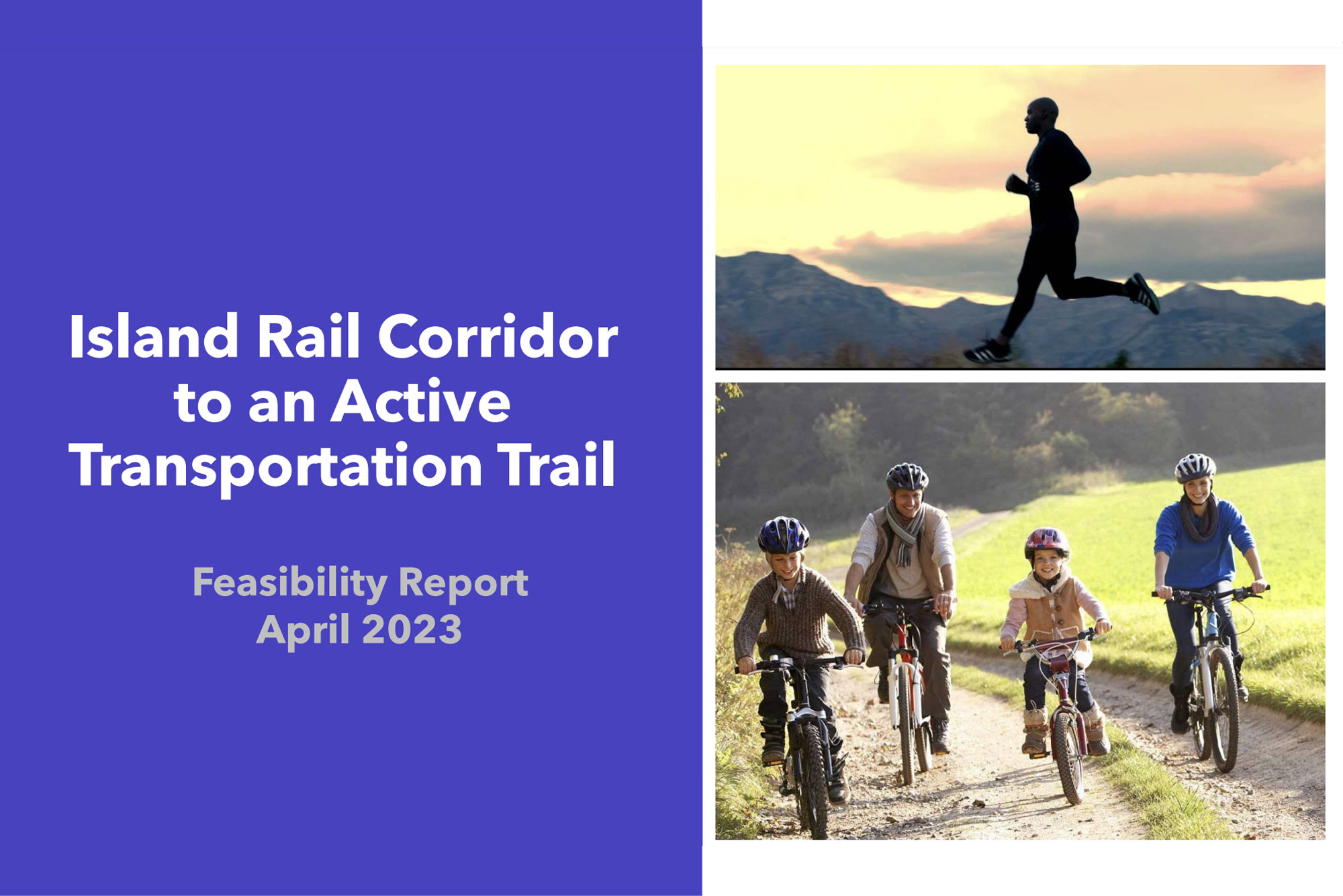Feasibility Study
Completed in April 2023, FORT-VI’s federally-funded feasibility study demonstrates the benefits of a continuous multi-use trail on the rail bed of the Island Corridor, formerly known as the E&N Corridor. The corridor has been unused since 2011, and for a number of reasons, including very high costs, is not likely to be used again for rail service. The study was funded through a $45,000 grant from the Federal Active Transportation Fund.
Costs
The estimated costs per km are similar to the costs of the recently started Sicamous to Armstrong North Okanagan Rail Trail which is partly funded by a $12 million Federal Active Transportation Fund grant to the Splatsin First Nation.
- Island Corridor Rail Trail cost per km: $595,823
- North Okanagan Rail Trail cost per km: $554,214
Visitation
The Island Corridor Trail is expected to attract 990,000 visitors annually.
The Great Allegheny Passage (GAP) Trail in Pennsylvania attracted 1.5 million visitors in 2020.
Economic Impact
Estimated annual economic impact of the Island Corridor Rail Trail: $95 million. The Island Corridor is almost identical in population and length to the GAP trail corridor in Pennsylvania. The GAP Trail has been established for more than 30 years and it had an annual economic impact of $162 million in 2019. Over 40% of businesses on the GAP Trail corridor owe their existence to the trail.
Health and Wellness Impact
“A vast body of literature exists demonstrating the significant positive physical and mental health impacts related to regular active transportation. Well-connected and well-maintained active transportation trails are an accessible mode of transportation that enable individuals of all ages to travel safely and, at the same time, increase the social capital and cohesion within a community.”
Summary of Findings
Active transportation is a proven means of bringing unused rail corridors back into public use. Encouraging and funding active transportation is a key element of both federal and provincial government transportation policy. The study examines successful rails to trails projects in Canada, the USA and New Zealand and reports on the positive economic, health and other impacts they have generated for the regions they traverse. In many areas smaller rural communities and rural economies have been revitalized by trails.
One trail studied, The Great Allegheny Passage (GAP) Trail in the Northeast US traverses a region which has almost identical corridor population geography as the Island Corridor. The GAP Trail generated $162 million in economic impacts in 2019. The annual economic impacts of the Island Corridor Trail are estimated to be $95 million per year.
The study also looked at the positive health benefits of active transportation and found significant positive impacts on physical and mental health, sense of community and reduced air pollution. Access to safe car free routes also greatly improves public safety and sense of security.
The study includes a class “D” cost estimate. This class of estimate is sufficient to allow the costs of different projects to be compared with one another. The estimated cost per km of the Island Corridor Trail is similar to the estimated cost of the North Okanagan trail when adjusted for inflation. Although the costs were estimated for the whole trail, it is likely that the trail would be constructed in sections over a period of time. The GAP Trail was constructed in sections over a period of 35 years.
The next step in the corridor evaluation should be a more detailed evaluation of the costs based on a comprehensive survey. This could be done on a regional basis. For example, the 2016 study of the corridor in the Nanaimo Region could be used as a starting point to do an evaluation for that region.

